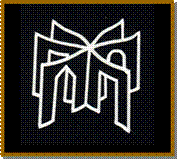Coestructuración multisistémica y estrategias didácticas en estados iniciales de aprendizaje de la lectoescritura / Multisystem co-structure and didactic strategies in early stages in literacy learning
DOI:
https://doi.org/10.17398/1988-8430.23.1.6Palabras clave:
proceso lector, mediación fónica, frase gestual, comunicación no verbal / reading process, phonic mediation, gestural phrase, nonverbal communication.Resumen
Resumen:
El enfoque auditivo propone el concepto de mediación fónica (Cantero, 2002b y 2004) como proceso clave en la didáctica de la lectoescritura y consiste en la identificación de las unidades prosódicas del texto como estrategia de acceso a la comprensión lectora (Recio, 2012). La coestructuración multimodal entre entonación y gestualidad se ha demostrado en estudios pioneros sobre comunicación (Condon, 1979; Kendon, 1987), constatándose recientemente que dicha relación es un elemento esencial del código oral (Torregrosa, 2006 y 2011). Basándonos en este marco conceptual, el objetivo de este trabajo consiste en ofrecer nuevas claves didácticas relacionadas con las estrategias de inicio en la lectura considerando la relación entre el enfoque auditivo en la lectura y la coestructuración multimodal en el discurso.
Abstract:
The auditory approach proposes the concept of phonic mediation (Cantero, 2002b and 2004) as a key process in teaching literacy, consisting of identifying prosodic units in the text as an access strategy for reading comprehension (Recio, 2012). The multimodal co-structuring between intonation and gesticulation has been proved in several pioneer works on communication (Condon, 1979; Kondon, 1987). Recently, Torregrosa (2006 and 2011) shows that kinesic-intonational costructuring is a key aspect of the oral code. Taking into account this conceptual framework, we provide new didactic clues related to strategies in early reading, considering the relationship between the auditory approach to reading and the multimodal costructuring (intonation and gesticulation) in discourse
Referencias
Alibali, M. W.; Kita, S. y Young, A. J. (2000). Gesture and the process of speech production: We think, therefore we gesture. Language and Cognitive Processes, 15, págs. 593–613.
Alonso-Cortés Fradejas, Mª D. (2000). La voz en la conversación: propuesta para el análisis de los rasgos del paralenguaje. Tesis Doctoral, Departamento de Filología Hispánica, León: Universidad de León.
Alonso-Cortés Fradejas, Mª D. (2006). Lo lingüístico y lo paralingüístico en los primeros estudios sobre adquisición del lenguaje, en M. Villayandre (Ed.), Actas del XXXV Simposio Internacional de la Sociedad Española de Lingüística, págs. 48-65. León: Universidad de León. Disponible en: http://www3.unileon.es/dp/dfh/SEL/actas/Alonso.pdf [consulta: 17 octubre 2014].
Bara, B. G. et al. (2011). Processing communicative intentions recruits a common neural network regardless of the expressive modalities, en B. Kokinov; A. Karmiloff-Smith y N. J. Nersessian (Eds.), Proceedings of the European Conference on Cognitive Science. Sofía: New Bulgarian University Press. Disponible en: http://nbu.bg/cogs/eurocogsci2011/proceedings/index.html [consulta: 17 octubre 2014].
Bates, E.; Benigni, L.; Bretherton, I.; Camaioni, L. y Volterra, V. (1979). The emergence of symbols: Cognition and communication in infancy. Nueva York: Academic Press.
Bavelas, J.; Gerwing, J.; Sutton, Ch. y Prevost, D. (2008). Gesturing on the telephone: independent effects of dialogue and visibility. Journal of Memory and Language, 58(2), págs. 495-520.
Birdwhistell, R. L. (1952). Introduction to kinesics. An annotation system for analysis of body motion and gesture. Louisville: University of Louisville Press.
Birdwhistell, R. L. (1970). Kinesics and context. Philadelphia: University of Pennsylvania Press.
Broaders, S. C.; Wagner, S.; Mitchell, Z. y Goldin-Meadow, S. (2007). Making children gesture brings out implicit knowledge and leads to learning. Journal of Experimental Psychology, 136 (4), págs. 539-550.
Bucciarelli, M. (2007). How the construction of mental models improves learning. Mind and Society, 6, págs. 67-89.
Cameron, H.; Xu, X. /2011). Representational gesture, pointing gesture, and memory recall of preschool children. Journal of Nonverbal Behavior, 35, págs. 155-171.
Cantero, Fco. J. (2002a). Teoría y análisis de la entonación. Barcelona; Edicions de la Universitat de Barcelona.
Cantero, Fco. J. (2002b). Oír para leer: la formación del mediador fónico en la lectura, en A. Mendoza (Dir.), La seducción de la lectura en edades tempranas. Madrid: Ministerio de Educación, Colección Aulas de Verano.
Cantero, Fco. J. (2003). Fonética y didáctica de la pronunciación, en A. Mendoza (Coord.), Didáctica de la lengua y la literatura para la educación primaria. Madrid: Prentice Hall.
Cantero, Fco. J. (2004). La ruta de acceso a la lectura, Actas del Congreso Internacional El inicio de la lectoescritura en la Educación Infantil. Madrid: Ministerio de Educación y Ciencia.
Cantero, Fco. J.; de Arriba, J. (1997). Psicolingüística del discurso. Barcelona: Octaedro.
Condon, W. S. (1980). The relation of interactional synchrony to cognitive and emotional processes, en M. R. Key (Ed.), The relationship of verbal and nonverbal communication. La Haya: Mouton [Contributions to the Sociology of Language, 25], págs. 49-65.
Condon, W. S. (1982). Cultural microrhythms, en M. Davis (Ed.), Interaction rhythms. Periodicity in communicative behavior, págs. 53-77. Nueva York: Human Sciences Press Inc.
Condon, W. S. y Ogston, W. D. (1996). Sound film analysis of normal and pathological behavior patterns. Journal of Nervous and Mental Diseases, 143(4), págs. 338-347.
Cutica, I. y Bucciarelli, M. (2011). ‘The more you gesture, the less I gesture’: Co-speech gestures as a measure of mental model quality”. Journal of Nonverbal Behavior, 35, págs. 173-187.
Church, R. B.; Garber, P. y Rogalski, K. (2007). The role of gesture in memory and social communication. Gesture, 7, págs. 137–158.
De Ruiter, J. P.; Rossignol, S.; Vuurpijl, L.; Cunningham, D. W. y Levelt, W. J. M. (2993). SLOT: A research platform for investigating multimodal communication. Behavior Research Methods, Instruments, & Computers, 35(3), págs. 408-419.
Goldin-Meadow, S. y Alibali, M. W. (1999). Does the hand reflect implicit knowledge? Behavioral and Brain Sciences, 22, págs. 766–787.
Goldin-Meadow, S. (2011). Learning through gesture. WIREs Cognitive Science, 2, págs. 595-607.
Greenfield, P. y Smith, J. (1976). The structure of communication in early language development. Nueva York: Academic Press.
Hall, E. T. (1963). A system for the notation of proxemic behavior. American Anthropologist, 65(5), págs. 1003-1026.
Iverson, J. M. y Goldin-Meadow, S. (1997). What’s communication got to do with it? Gesture in children blind from birth. Developmental Psychology, 33 (3), págs. 453-467.
Jakobson, R. (1960). Closing statements: Linguistics and Poetics, en Th. A. Sebeok (Ed.), Style in Language, págs. 350-377. Massachusetts: Massachusetts Institut of Technology Press (M.I.T.).
Kempton, W. (1980). The Rhythmic Basis of Interactional Micro-Synchrony, en M. R. Key (Ed.), The Relationship of Verbal and Nonverbal Communication, págs. 67-75. La Haya: Mouton [Contributions to the sociology of language, 25].
Kendon, A. (1970). Movement coordination in social interaction: some examples described. Acta Psychologica, 32(2), págs. 101-125.
Kendon, A. (1872). Some relationships between body motion and speech. An analysis of an example, en A. W. Siegman; B. Pope (Eds.), Studies in Dyadic Communication, págs. 177-210. Nueva York: Pergamon Press, Elmsford.
Kendon, A. (1987). On gesture: Its Complementary Relationship with Speech, en A. W. Siegman; S. Feldstein (Eds.), Nonverbal behavior and communication, págs. 65-97. Nueva Jersey: Lawrence Erlbaum Associates, Hillsdale.
Loehr, D. P. (2004). Gesture and Intonation. Tesis Doctoral. Georgetown University, Washington, DC. Disponible en: http://www9.georgetown.edu/faculty/loehrd/pubs_files/Loehr04.pdf [consulta: 17 octubre 2014].
Maurer, D. y Mondloch, C. (2004). Neonatal synesthesia: A re-evaluation, en L. Robertson; N. Sagiv (Eds.), Attention on Synesthesia: Cognition, Development and Neuroscience, págs. 193-213. Oxford: Oxford University Press. Disponible en: http://psych.mcmaster.ca/maurerlab/Publications/Maurer_NeonatalSynesthesia.pdf [consulta: 17 octubre 2014].
McNeill, D. (1985). So you think gestures are nonverbal? Psychological Review, 92(3), págs. 350-371.
McNeill, D. (1992). Hand and mind: what gestures reveal about thought. Chicago: The University of Chicago Press,.
Neisser, U. (1967). Cognitive Psychology. Nueva York: Appleton-Century-Crofts.
Payà, M. (2004). Interacció del grup tonal i el gest en el discurs: una aproximació d’anàlisi multimodal, en Ll. Payrató; N. Alturo; M. Payà (Eds.), Les fronteres del llenguatge. Lingüística i comunicació no verbal, págs. 155-172. Barcelona: Promociones y Publicaciones Universitarias, S.A. (PPU) [Lingüística catalana, 7].
Poyatos, F. (1972). The communication system of the speaker-actor and his culture. A preliminary investigation. Linguistics, 10(83), págs. 64-86.
Poyatos, F. (1993). Paralanguage: a linguistic and interdisciplinary approach to interactive speech and sounds. Amsterdam: John Benjamins.
Poyatos, F. (1994a). La comunicación no verbal: cultura, lenguaje y conversación. Vol. I. Madrid: Istmo.
Poyatos, F. (1994b). La comunicación no verbal: paralenguaje, kinésica e interacción. Vol. II. Madrid: Istmo.
Real Academia de la Lengua. Diccionario de la lengua española, edición electrónica. Disponible en: http://www.rae.es/recursos/diccionarios/drae [consulta: 18 octubre 2014].
Recio, S. (2012). Prosodia y comprensión lectora en ELE. Barcelona: Memoria de Máster, Departamento de Didáctica de la Lengua y la Literatura, Universidad de Barcelona, documento inédito.
Rimè, B. (1982). The elimination of visible behavior from social interactions: Effects of verbal, nonverbal and interpersonal variables. European Journal of Social Psychology, 12, págs. 113–129.
Roby-Brami, A.; Hermsdörfer, J.; Roy, A. C. y Jacobs, S. (2011). A neuropsychological perspective on the link between language and praxis in modern humans. Philosophical Transactions of the Royal Society, 367, págs. 144-160. Disponible en: http://rstb.royalsocietypublishing.org/content/367/1585/144.full.html#ref-list-1 [consulta: 17 octubre 2014].
Roth, W-M. (2001). Gestures: their role in teaching and learning. Review of Educational Research, 71(3), págs. 365-392.
Shannon, C. E. (1948). A Mathematical Theory of Communication. The Bell System Technical Journal, 27(3), págs. 379-423.
Thies, A. (2003). First the Hand, then the Word: On Gestural Displacement in Non-Native English Speech. Bielefeld: Tesina de Licenciatura, Universität Bielefeld.
Torregrosa J. (2006). Análisis multisistémico de la comunicación humana. Phonica, 2. Disponible en: http://www.ub.edu/lfa [consulta: 17 octubre 2014].
Torregrosa, J. (2011). Análisis multisistémico de las partículas modales del alemán. Barcelona: Tesis Doctoral, Departamento de Didáctica de la Lengua y la Literatura, Universidad de Barcelona. Disponible en: http://www.ub.edu/lfa [consulta: 17 octubre 2014].
Trager, G. L. (1958). Paralanguage: a first approximation. Studies in Linguistics, 13(1), págs. 1-12.
Trager, G. L. (1961). The typology of paralanguage. Anthropological Linguistics, 3(1), págs. 17-21.
van Deusen-Phillips, S. B.; Goldin-Meadow, S. y Miller, P. J. (2001). Enacting stories, seeing worlds: similarities and differences in the cross-cultural narrative development of linguistically isolated deaf children. Human Development, 44, págs. 311-336.
Wagner, S.; Mitchell, Z. y Goldin-Meadow, S. (2008). Gesturing makes learning last. Cognition, 106, págs. 1047-1058.
Wagner, S.; KuangYi, T. y Goldin-Meadow, S. (2919). Gesturing makes memories that last. Journal of Memory and Language, 63, págs. 465-475.
Xu, J.; Gannon, P. J.; Emmorey, K.; Smith, J. F. y Braun, A. R. (2009). Symbolic gestures and spoken language are processed by a common neural system, en L. G. Ungerleider (Ed.), Proceedings of the National Academy of Sciences of the United States of America (PNAS). 106(49).
Descargas
Publicado
Número
Sección
Licencia

Tejuelo se publica bajo una licencia Creative Commons Reconocimiento-NoComercial-SinObraDerivada 3.0 España.


.jpg)



